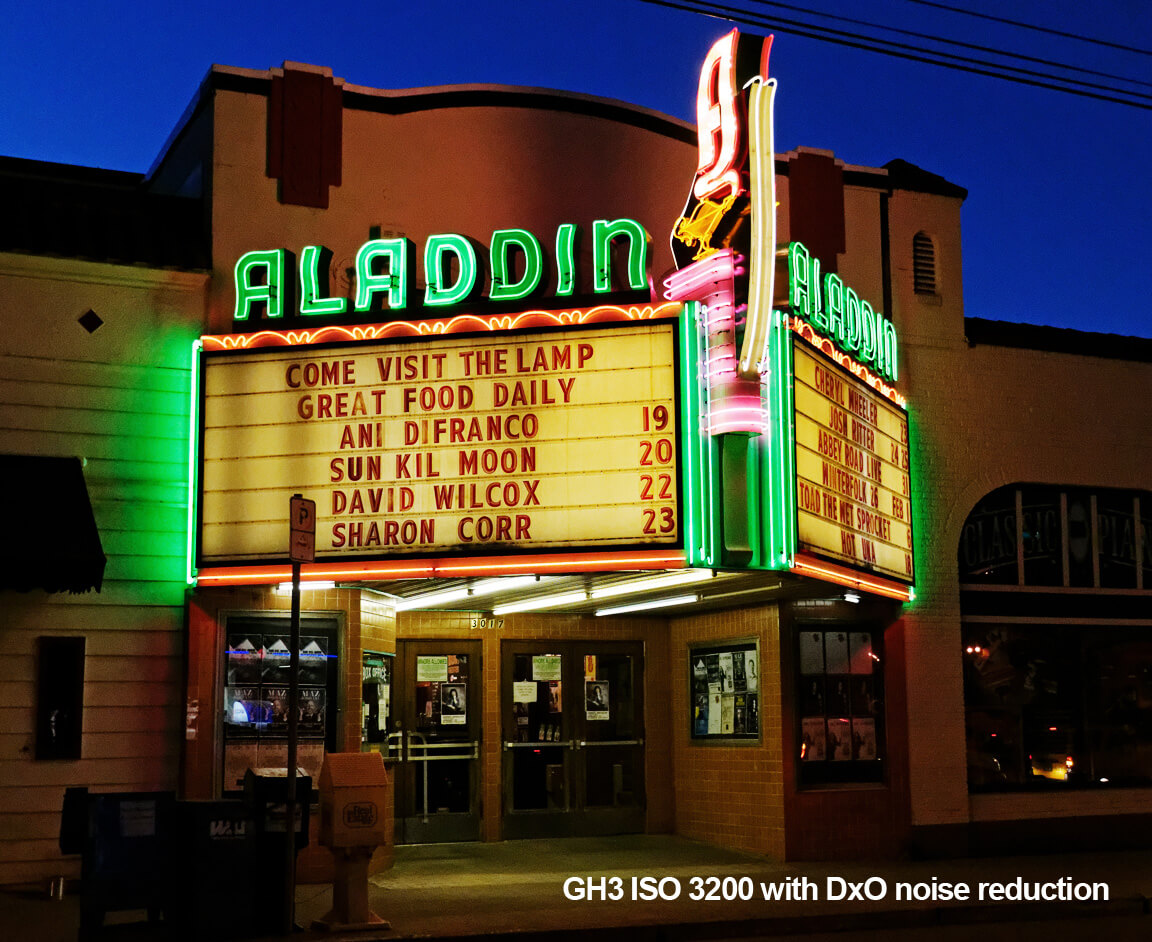High ISO and Noise Reduction
Noise is an issue with all digital cameras. When the Panasonic Lumix G1 first came out I didn’t like the noise levels in my images above ISO 400. With current cameras from Panasonic and Olympus I feel comfortable shooting up to ISO 1600 but above that the noise gets too strong for my taste.
If you’re not familiar with noise I like to think of it as what we used to call grain back in the film days. Grain could be interesting in a photo, but I don’t feel the same way about noise. Film grain had an irregular pattern where digital noise is uniform across the image. Noise is stronger at high ISO’s and in smaller sensor cameras like Micro Four-thirds.
I’ve always used Adobe Lightroom for my workflow and I thought it did good job eliminating noise and preserving detail. The problem with noise removal is that most software blurs detail to mask the noise. A couple of weeks ago I saw a demo of DxO Optics Pro 9 software and bought a copy. The DxO Optics software has profiles for most cameras, lenses and their different ISO’s so it can apply a specific noise reduction algorithm for that specific ISO and camera body.
The screen grab shows what the default settings did to an image that I shot on a Panasonic Lumix GH3 at ISO 3200 and 6400. The left side is the original RAW file showing the grain pattern. The right side is with the default noise reduction on DxO Optics Pro 9.
If you don’t want to worry about noise or noise reduction try shooting JPEG files instead of RAW files at ISO’s above 1600. The noise reduction built into your Micro Four-thirds camera does a very good job on JPEG files.—Mark Toal






